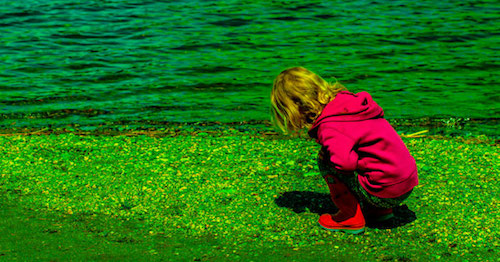 Evolution
Evolution
 Intelligent Design
Intelligent Design
Calculating the Maximum Number of Trials Evolution Could Have Performed

Countless people use the following rationale to justify saying there was no need for an intelligent designer behind life: evolution has had a near-infinite number of trials in which to create the full diversity of life, including its molecular machines, molecular computers, and digitally encoded genomes. Let’s take an opportunity to examine these points more closely.
In other scientific disciplines, the first step one must take before figuring out a solution is to establish the boundary conditions within which a problem must be solved. Since we should require the same standard of scientific rigor from evolutionary biology, let us calculate an extreme upper limit for the total number of evolutionary trials one could expect over the history of life.
An estimate for the total number of bacteria on earth is 3.17 x 10^30.1,2 In comparison, all other life occurs in relatively insignificant numbers, too many orders of magnitude smaller to matter. Nonetheless, to be generous, let us add .03 x 10^30 other life forms in order to get 3.2 x 10^30 life forms on the planet (starting from the moment the earth cooled enough to permit this).
The larger the genome, the more opportunities there are for mutations to occur. Let us assume a generous average genome size of 100,000 possible protein coding genes. When I say “possible,” I include “junk” DNA as fertile ground for new genes.
Since a mutation can change the sequence of a gene, is it possible for evolution to try different gene sequences in sequence space in order to ‘discover’ a novel, functional protein family?
Let us assume there is a fast mutation rate of 10^-3 mutations per possible gene per replication. Given 10^5 possible genes per organism, each lineage should be able to “try out” 100 new possible gene sequences per generation. To make our evolutionary search more efficient, we will also assume that no sequence was ever tried twice over the entire history of life.
Finally, let us use a fast replication rate (for nature) of once every 30 minutes over a 4 billion year period, for a total of 7 x 10^13 generations. These very generous parameters allow us to calculate an upper limit for the total number of evolutionary trials over four billion years.
Total number of possible genes sampled per single lineage over 4 billion years = 7 x 10^15
Extreme upper limit for the total number of possible gene families sampled for all of life over 4 billion years = 2.2 x 10^45 trials.
I have been extremely generous — by two orders of magnitude in comparison to a peer reviewed estimate for ‘an extreme upper limit’ of 4 x 10^43 trials 3). Since Dryden estimates 10^43 as his ‘extreme upper limit’, and it is peer reviewed, we will use his estimate instead of mine.
Stable, functional 3D protein structures are determined by physics, not biology, therefore, we can regard each protein family as a target in sequence space that evolution must find. With 10^43 trials, one would think there would be no problem. Unfortunately, there are virtually no sequences that will produce stable, functional 3D structures. For example, RS7 is a universal protein required for all life forms, yet only 1 in 10^100 sequences will produce a functional RS7 protein domain.
Obviously, in order for evolution to find any RS7 sequences, 10^43 trials is woefully inadequate — by 57 orders of magnitude. As I have shown elsewhere, RS7 requires 332 bits to encode, well within the range of what an intelligent mind can produce. Therefore, what options should we examine?
-
Novel protein family sequences were discovered through random genetic drift.
-
Novel protein families were discovered via an evolutionary search guided by natural selection.
-
Novel protein family sequences were encoded by an intelligent mind.
As I have already established, 3) can be scientifically tested and verified, so it definitely serves as a viable explanation. I hope to look at 1) and 2) more carefully on future occasions.
References:
(1) K. Lougheed, “There are fewer microbes out there than you think,” Nature, (2012).
(2) J. Kallmeyer et al., “Global distribution of microbial abundance and biomass in subseafloor sediment,” Proc. Natl. Acad. Sci. USA., (2012) 109 No. 40.
(3) D.T.F. Dryden et al., “How much of protein sequence space has been explored by life on Earth?,” Journal of the Royal Society Interface, (2008) 5, 953-956.
Photo: Searching sequence space, by Kirk Durston.
Cross-posted at SQyBLu/Contemplations.
